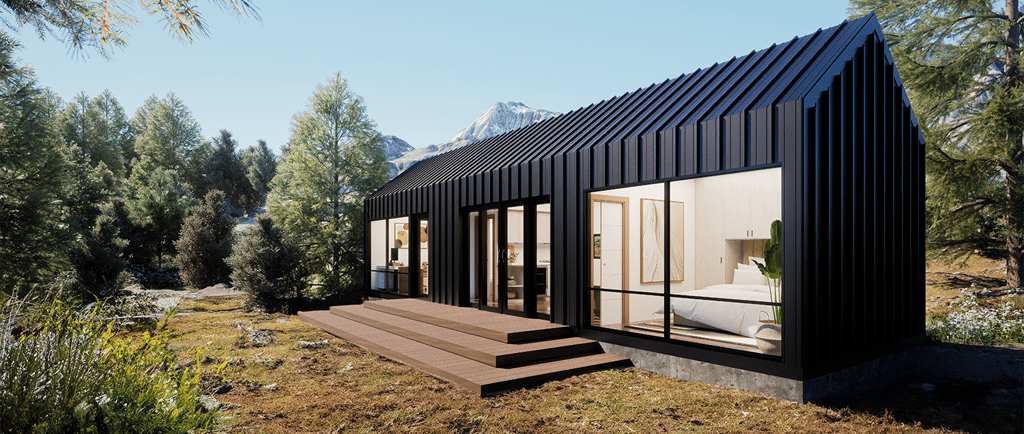How Long Do Prefab Homes Really Last? Durability and Maintenance Explained
1/13/20254 min read


"How long will my prefab home last?" It's perhaps the most common question potential buyers ask, and with good reason. In 2025, as prefabricated homes become increasingly popular, understanding their true lifespan and durability has never been more important. Let's dive deep into what really determines a prefab home's longevity and how you can maximize your investment.
The Truth About Prefab Home Longevity
Here's a surprising fact: modern prefab homes can last 50-100 years or more with proper maintenance. That's right – these aren't the temporary structures of yesteryear. Dr. Sarah Chen, a structural engineer specializing in prefabricated construction, explains: "Today's prefab homes are built to the same, if not higher, standards than traditional homes. The controlled factory environment actually allows for more precise construction and better quality control."
The Evolution of Durability
Let's look at how prefab homes have evolved:
1950s models: 25-30 years
1970s builds: 30-40 years
1990s homes: 40-60 years
Current generation: 50-100+ years
"What we're seeing in 2025 is unprecedented," notes Michael Rodriguez, a prefab home inspector with 30 years of experience. "The combination of advanced materials and precision manufacturing has created prefab homes that can easily outlast their traditional counterparts."
Construction Quality: Where It All Begins
The durability of modern prefab homes starts with their construction. Unlike traditional homes built in varying weather conditions, prefab homes are assembled in controlled factory environments where:
Temperature and humidity are precisely managed
Materials are stored in optimal conditions
Assembly follows strict quality control protocols
Each component undergoes rigorous testing"Think of it like building a high-end car," explains Jennifer Wong, a prefab manufacturing specialist. "Every component is precision-engineered, tested, and assembled under perfect conditions."
The Reality of Materials and Durability
Modern prefab homes utilize materials that stand the test of time:
Structural Components
Steel frames lasting 50+ years
Concrete elements enduring 100+ years
Engineered wood rated for 30-50 years
Advanced composites lasting 40-60 years
But here's what makes these homes truly special: the integration of these materials is done with precision that's nearly impossible to achieve on a traditional construction site.
Weather Resistance: Built to Last
One of the most impressive aspects of modern prefab homes is their weather resistance. Tom Martinez, a climate resilience expert, shares: "We're seeing prefab homes in Florida withstanding hurricanes and homes in Alaska handling extreme cold. It's all about the engineering."
Climate-Specific Features
Hot climates: Advanced insulation and cooling systems
Cold regions: Thermal barriers and snow-load engineering
Coastal areas: Corrosion-resistant materials
High-wind zones: Enhanced structural reinforcement
The Truth About Maintenance
Let's talk about what it really takes to maintain a prefab home. The annual maintenance cost typically ranges from $500-1,500, which is actually lower than many traditional homes. Here's a practical breakdown:
Seasonal Maintenance Checklist
Spring:
Inspect exterior seals and joints
Check ventilation systems
Clean and test gutters
Examine foundation conditions
Summer:
AC system maintenance
UV protection assessment
Exterior cleaning
Pest inspection
Fall:
Weather sealing review
Heating system check
Roof inspection
Drainage system cleaning
Winter:
Insulation verification
Pipe protection
Snow load monitoring
Energy efficiency check
Common Wear Points: Know What to Watch
Understanding where to look for potential issues can save thousands in repairs. Key areas include:
Joint and seam integrity
Entry point weatherproofing
Utility connection points
Roof edge conditions"The key is early detection," says Lisa Thompson, a maintenance specialist. "Most issues can be resolved quickly and affordably if caught early."
Professional Inspections: Worth Every Penny
Regular professional inspections are crucial for longevity. Here's what you need:
Foundation checks every 2-3 years ($200-400)
Annual structural inspection ($400-800)
Bi-annual system reviews ($300-500)
Emergency assessments as needed
Real-World Success Stories
Consider the case of the Anderson family in Colorado. Their prefab home, installed in 1975, has weathered 50 years of mountain conditions. "The key to our home's longevity has been consistent maintenance," says John Anderson. "We've spent roughly $1,000 annually on maintenance, but haven't faced any major structural issues."
Or take the Martinez family's coastal prefab in Florida. After surviving three major hurricanes, their 2010 prefab home stands as testament to modern engineering. "People are always surprised when they learn it's a prefab," Maria Martinez notes. "It's outlasted several traditional homes in our neighborhood."
Extending Your Prefab Home's Life: Expert Tips
Maintain Religiously
Follow manufacturer guidelines
Keep detailed maintenance records
Address issues immediately
Use qualified professionals
Invest in Quality
Choose high-grade materials for repairs
Work with certified contractors
Use recommended products
Don't skip scheduled maintenance
Plan for the Future
Budget for regular updates
Stay informed about new technologies
Consider preventive upgrades
Build maintenance reserves
Common Misconceptions Debunked
Let's address some persistent myths:
Myth: "Prefab homes aren't as durable as traditional homes." Reality: Modern prefab homes often exceed traditional home durability due to precision engineering and quality control.
Myth: "They require more maintenance." Reality: Prefab homes typically require similar or less maintenance than traditional homes.
Myth: "They don't appreciate in value." Reality: Well-maintained prefab homes appreciate similarly to traditional homes in the same market.
Looking to the Future
The durability of prefab homes continues to improve. Emerging trends include:
Smart materials that self-monitor for damage
Advanced weather-resistant coatings
Integrated maintenance monitoring systems
Sustainable materials with longer lifespans
Making the Most of Your Investment
To maximize your prefab home's lifespan:
Choose Quality Initially
Research manufacturers thoroughly
Check certifications and standards
Review warranty terms
Understand maintenance requirements
Plan for Maintenance
Create a maintenance schedule
Budget for regular upkeep
Build an emergency fund
Keep detailed records
Stay Informed
Join owner communities
Attend maintenance workshops
Follow manufacturer updates
Connect with qualified contractors
Conclusion: The Reality of Prefab Home Durability
Modern prefab homes aren't just durable – they're built to last generations. With proper maintenance and care, today's prefab homes can easily last 50-100 years or more. The key lies in understanding that durability isn't just about construction quality – it's about ongoing care and attention.
Remember:
Quality construction matters
Regular maintenance is essential
Professional support helps
Long-term planning pays off
Whether you're considering a prefab home or already own one, understanding these durability factors helps ensure your investment stands the test of time. With proper care and maintenance, your prefab home can provide comfortable, reliable shelter for generations to come.
Last updated: January 13, 2025. Information and costs may vary by location and specific circumstances. Consult local professionals for precise recommendations.


